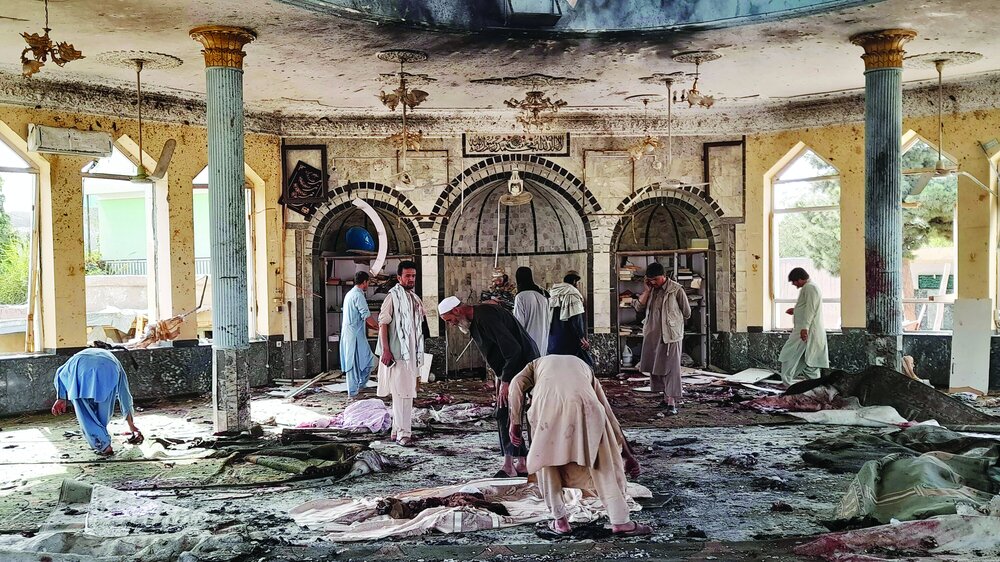Afghans critically wounded in terror act sent to Iran for treatment

TEHRAN — Iran was due to receive a group of Afghan nationals who sustained injuries during last week’s terror attack on a Shia mosque in the southern city of Kandahar.
The officials in Kandahar said as many as 30 Afghans, who were in critical condition following the Daesh-claimed attack on the Bibi Fatima mosque, were being transferred by plane to Iran for treatment.
"The process is underway in coordination with the Islamic Republic of Iran," the officials said.
At least 47 people were killed and more than 80 others wounded on Friday after an explosion went off inside the mosque in the southern Afghan city. Al Jazeera put the number of the dead at 68.
The blast came one week after another Shia mosque in Afghanistan’s northern city of Kunduz was targeted in a suicide bombing during Friday prayers. It also left about 50 dead and more than 100 injured.
Both tragedies were claimed by a local affiliate of the Daesh Takfiri terrorist group, which has a long history of attacking Afghanistan’s Shia minority.
The Iranian embassy condemned the attacks in a tweet, saying, "We hope Taliban leaders take decisive action against these wicked terrorist incidents.”
Iran has also sent humanitarian aid to Kunduz and Kandahar.
The terrorist bombings came after Taliban said they considered Daesh as a “headache” rather than a “threat”. The Taliban said the Takfiri outfit lacks popular support in Afghanistan and would certainly very soon be “suppressed.”
A new shipment of humanitarian aid weighing 25 tons has been delivered by Iran to the people of Kandahar.
“The ninth shipment of aid weighing 25 tons, including food, medicine, and health items, arrived in Kandahar,” the Iranian embassy in Kabul wrote on its Twitter page.
Following the conflict in Afghanistan, Iran has so far delivered several shipments of aid to the Afghan people, which mostly included food and medical items.
The UN said that at the start of the year more than 18 million people – about half of Afghanistan’s population – require aid amid the country’s second drought in four years.
The Taliban took power in Afghanistan in mid-August, as the U.S. was in the middle of a chaotic troop withdrawal from the country. The group announced the formation of a caretaker government on September 7.
The Taliban first ruled Afghanistan from 1996 to 2001, when the United States invaded the country and toppled the Taliban-run government on the pretext of fighting terrorism following the September 11 attacks in the U.S.
SA/PA
Leave a Comment